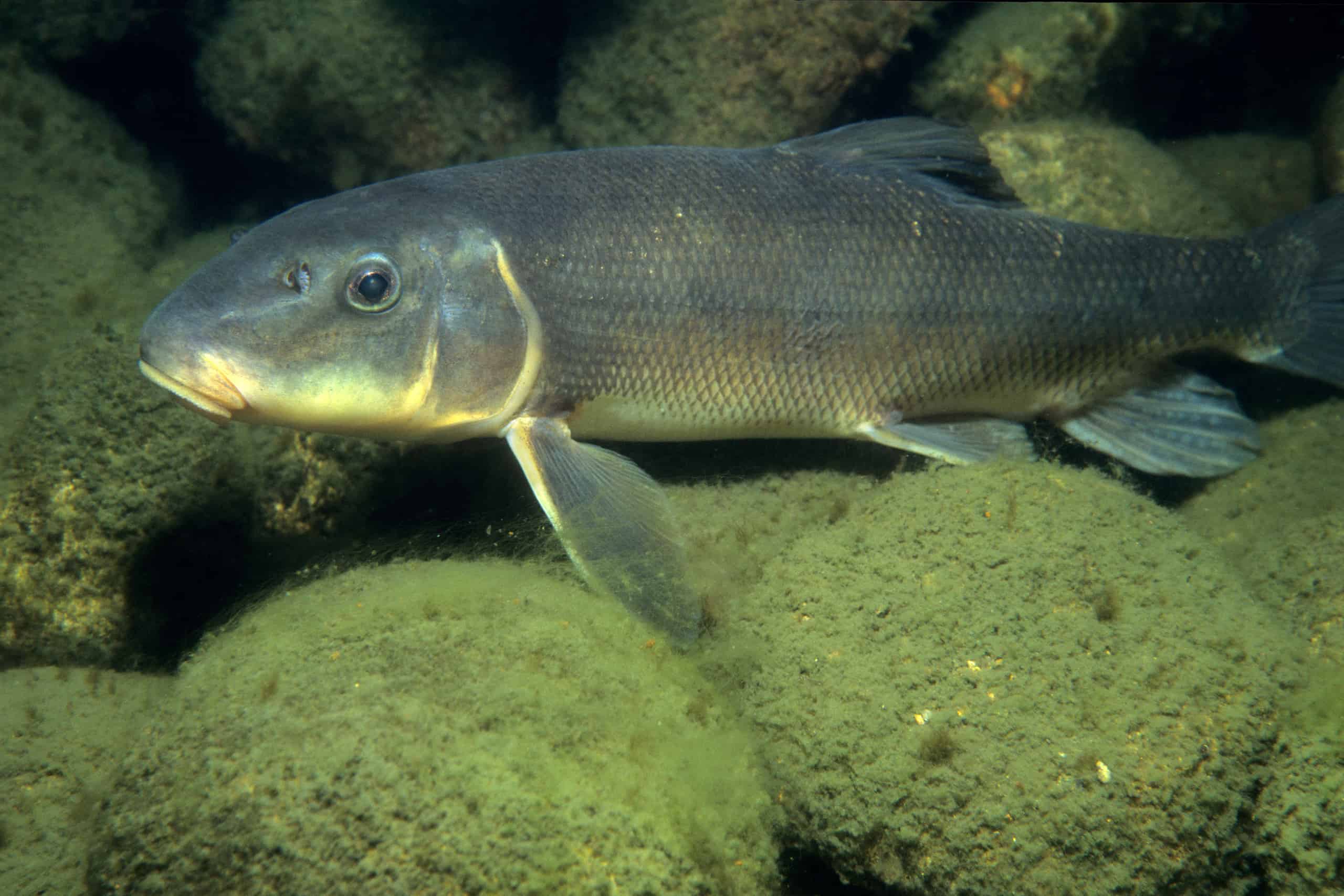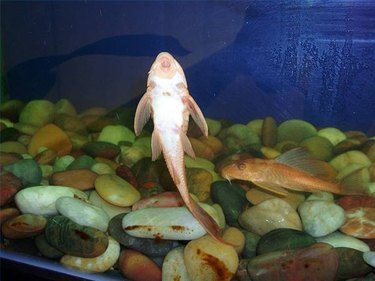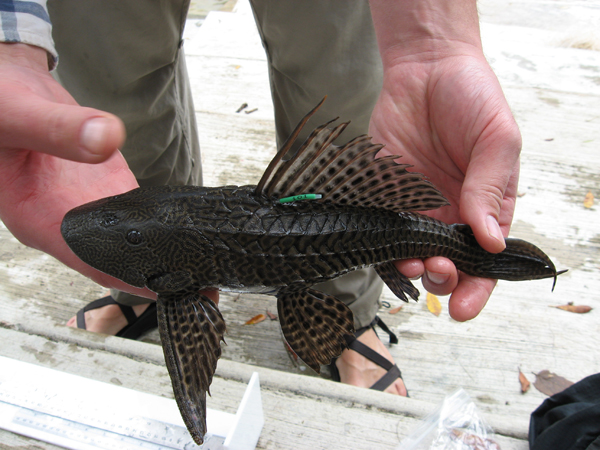
Sucker fish, also known as catfish or plecostomus, are fascinating aquatic creatures that can be found in freshwater environments all around the world. These unique fish are known for their sucker-like mouths, which they use to attach themselves to surfaces and feed on algae and detritus. If you are considering adding a sucker fish to your aquarium, it is important to understand their lifespan and what factors can influence their longevity.
The lifespan of sucker fish can vary depending on several factors, including their species, habitat, and overall care. On average, most sucker fish live for 10 to 15 years in captivity, although some species can live even longer with proper care. It is important to note that sucker fish can grow quite large, so it is crucial to provide them with an adequate tank size to ensure their well-being and longevity.
Proper care and maintenance are essential for extending the lifespan of your sucker fish. Providing a clean and well-maintained tank environment is crucial, as poor water quality can lead to stress, disease, and a shorter lifespan. Regular water changes, proper filtration, and a balanced diet are all important factors in promoting the health and longevity of your sucker fish.
In conclusion, the lifespan of sucker fish can vary depending on various factors, but with proper care and maintenance, these fascinating fish can live for many years in captivity. Understanding the needs and requirements of your sucker fish is the key to ensuring their well-being and providing them with the best possible chance for a long and happy life.
Understanding the Lifespan of Sucker Fish
Sucker fish, also known as plecos or plecostomus, are popular freshwater fish often kept in aquariums. Understanding their lifespan is essential for providing proper care and ensuring their longevity.
Factors Affecting Lifespan
Several factors can influence the lifespan of sucker fish:
- Species: There are numerous species of sucker fish, and each may have a different lifespan. Some common species, like the common pleco, can live for 10-15 years, while others, like the bristlenose pleco, may live for 5-8 years.
- Water Conditions: Maintaining optimal water conditions is crucial for the health and longevity of sucker fish. They require clean water with proper pH levels, temperature, and filtration to thrive.
- Diet: Sucker fish are mainly herbivores and require a well-balanced diet. A varied diet that includes algae wafers, vegetables, and occasional protein-rich foods will help ensure their nutritional needs are met.
- Tank Size: Providing enough space for sucker fish is important for their overall well-being. A larger tank with plenty of hiding places and suitable tank mates will reduce stress and contribute to a longer lifespan.
- Genetics: Genetics also play a role in the lifespan of sucker fish. Some individuals may have predispositions to certain health issues that can impact their longevity.
Caring for Sucker Fish
To ensure a healthy and long life for sucker fish, it is essential to provide them with proper care:
- Tank Setup: Set up a spacious tank with appropriate decorations and hiding spots to mimic their natural environment.
- Water Quality: Regularly test the water parameters and maintain clean, well-filtered water. Perform regular water changes to remove accumulated waste.
- Diet: Offer a varied diet consisting of algae wafers, fresh vegetables, and occasional protein-rich foods. Avoid overfeeding to prevent obesity and related health issues.
- Compatibility: Choose tank mates that are compatible with sucker fish. Aggressive or territorial fish may stress them out, leading to health problems.
- Observation: Keep a close eye on your sucker fish for any signs of illness or stress. Promptly address any issues to prevent them from worsening.
By providing the right conditions and proper care, sucker fish can live a long and healthy life in your aquarium. Understanding their lifespan and meeting their needs will contribute to their overall well-being and enjoyment for both you and your fish.
Factors Influencing the Lifespan of Sucker Fish
Several factors can influence the lifespan of sucker fish, determining how long they will live. These factors include:
- Species: Different species of sucker fish have varying lifespans. Some species can live up to 10-15 years, while others can live for over 20 years.
- Water Quality: The quality of the water in which sucker fish live can greatly impact their lifespan. Sucker fish are sensitive to changes in water parameters such as temperature, pH levels, and ammonia levels. In favorable water conditions, they are more likely to live longer.
- Diet: Sucker fish are herbivorous and feed on algae and other plant matter. A well-balanced diet with proper nutrition can contribute to their overall health and longevity.
- Habitat: The habitat and environment in which sucker fish live can affect their lifespan. They require a proper tank or pond setup with adequate space, hiding spots, and appropriate water flow to thrive and live longer.
- Compatibility: Sucker fish are often kept with other fish species in community tanks. Compatibility with tank mates is important to reduce stress, aggression, and injuries, which can impact their lifespan.
- Stress Levels: Stress can negatively impact the lifespan of sucker fish. Factors such as overcrowding, sudden changes in water conditions, and aggressive tank mates can increase their stress levels and reduce their lifespan.
- Genetics: Like any other living organism, genetics play a role in the lifespan of sucker fish. Some individuals may be genetically predisposed to certain health conditions or have a shorter lifespan than others.
By considering these factors and providing optimal care, sucker fish owners can help ensure that their fish live a long and healthy life.
Proper Care and Maintenance for Sucker Fish
Proper care and maintenance of sucker fish are essential in order for them to live a healthy and happy life. These fish require specific conditions and care in order to thrive. Here are some guidelines to ensure the well-being of your sucker fish:
Tank Setup:
Start by setting up a suitable tank for your sucker fish. A minimum tank size of 20 gallons is recommended, but larger tanks are preferable. Provide plenty of hiding spots, such as caves or plants, as sucker fish like to have places to retreat to. It is important to provide clean and well-oxygenated water in the tank. Use a filtration system and perform regular water changes to maintain optimal water quality.
Water Parameters:
Monitor and maintain the water parameters to provide the best conditions for your sucker fish. The ideal temperature range for sucker fish is between 72-80°F (22-27°C). The pH level should be kept around neutral, between 6.5-7.5. Sucker fish require good water quality, so make sure to test the water regularly and take appropriate measures to maintain the desired parameters.
Diet:
Offer a balanced diet to your sucker fish. They are omnivores and will eat both plant matter and small invertebrates. Provide a combination of high-quality sinking pellets or wafers and fresh vegetables, such as cucumber or zucchini. Supplement their diet with live or frozen foods like bloodworms or brine shrimp. It is important not to overfeed the sucker fish, as it can lead to health issues and poor water quality.
Companions:
Sucker fish are peaceful and can generally be kept with other non-aggressive fish species. However, it is important to choose tankmates that can tolerate the sucker fish’s unique dietary requirements and behavior. Avoid keeping them with fin-nipping or aggressive fish that might harm them.
Observation and Maintenance:
Regularly observe your sucker fish to ensure they are active, feeding well, and showing no signs of illness or distress. Keep an eye out for any unusual behavior, such as lethargy, loss of appetite, or visible signs of disease. Perform regular tank maintenance, including water changes, filter cleaning, and gravel vacuuming to maintain a clean and healthy environment for your sucker fish.
By following these guidelines for proper care and maintenance, you can provide a suitable and thriving environment for your sucker fish, helping them live a long and fulfilling life.
Choosing the Right Tank for Sucker Fish
Sucker fish, also known as plecos, are a popular choice for aquarium enthusiasts. These hardy and helpful fish can be a great addition to your tank, but it’s important to provide them with the right environment to thrive. Here are some key factors to consider when choosing a tank for your sucker fish:
| Size | Water Capacity | Shape |
|---|---|---|
| 40-75 gallons | Optimal | Rectangular |
When it comes to size, sucker fish need plenty of space to swim and explore. A tank size of 40-75 gallons is ideal for a single sucker fish, but if you plan on keeping multiple fish, you’ll need a larger tank. It’s important to provide them with enough room to establish their territory and prevent aggression.
Water capacity is another important factor to consider. Sucker fish produce a lot of waste, so it’s crucial to have a tank with enough water volume to dilute and remove toxins. A tank with a water capacity of 40-75 gallons is ideal for maintaining good water quality and keeping your sucker fish healthy.
The shape of the tank is also important. Sucker fish prefer tanks with a longer, rectangular shape rather than tall or round tanks. This allows them to swim freely and utilize the full length of the tank. The open swimming space also helps mimic their natural habitat and reduces stress.
In addition to these factors, it’s also important to provide ample hiding spots and places for your sucker fish to explore. Add some driftwood, rocks, and plants to create a natural and stimulating environment. Keep the water temperature between 72-82°F (22-28°C), and maintain good water quality by regularly testing and monitoring the tank.
By choosing the right tank for your sucker fish, you’ll be creating a comfortable and healthy home for these fascinating creatures. Remember to consider their size, water capacity, and tank shape, and provide plenty of hiding spots and stimulation. With proper care, your sucker fish can live a long and fulfilling life in your aquarium.
Feeding Habits and Nutrition for Sucker Fish
Sucker fish, also known as catfish or bottom-feeders, have unique feeding habits and dietary needs. These fish are known for their ability to eat algae, dead plants, and even small invertebrates that live on the bottom of bodies of water. Their natural diet also includes organic debris and detritus.
Due to their diet, sucker fish play an important role in maintaining the cleanliness of their habitat. They help to keep the water clean by consuming organic waste materials that would otherwise contribute to the build-up of toxins and pollutants.
When kept as aquarium pets, it is important to provide sucker fish with a balanced diet that mimics their natural feeding habits. These fish can be given specialized sinking pellets or wafers that are specifically formulated for bottom-feeders. These pellets are often rich in plant matter and may also contain protein sources such as shrimp or fish meal to meet their nutritional requirements.
In addition to commercially available food, you can also supplement their diet with fresh vegetables, such as cucumber or zucchini slices. Sucker fish will readily consume these vegetables, which provide additional nutrients and fiber.
It is important to avoid overfeeding sucker fish, as they are prone to obesity. These fish have a slower metabolism compared to other species, so it is recommended to feed them smaller portions multiple times a day, rather than one large meal.
Ensure that the water quality is maintained, as poor water conditions can negatively impact the sucker fish’s health and appetite. Regular water changes and filtration are essential to keep their habitat clean and suitable for their well-being.
In conclusion, understanding the feeding habits and nutritional needs of sucker fish is crucial for their overall health and lifespan. By providing them with a balanced diet and a clean environment, you can ensure that your sucker fish live a long and healthy life.
Common Diseases and Health Issues in Sucker Fish
Sucker fish are generally hardy and easy to care for, but they can still be prone to a few common diseases and health issues. It’s important to be aware of these issues so that you can recognize and address them promptly.
Here are some of the most common diseases and health issues in sucker fish:
1. Ich (White Spot Disease)
- This is a common parasite that affects many species of freshwater fish, including sucker fish.
- Infected fish will develop small white spots on their bodies, fins, and gills.
- Ich can be treated with over-the-counter medications, and it’s important to quarantine affected fish to prevent the spread of the disease.
2. Fin Rot
- Fin rot is a bacterial infection that can occur when a fish’s fins are damaged or stressed.
- Infected fish will have ragged and frayed fins, and the infection may spread to other parts of their bodies.
- Fin rot can be treated with antibiotics and by improving water quality and reducing stress.
3. Bloat
- Bloat is a condition where a fish’s abdomen becomes swollen and distended.
- It is typically caused by overeating, constipation, or bacterial infection.
- Treating bloat involves addressing the underlying cause, which may include adjusting the fish’s diet, improving water quality, or administering medication.
4. Fungus
- Fungal infections in sucker fish usually occur when the fish’s slime coat is compromised due to poor water quality or injury.
- Infected fish will have cotton-like growths on their bodies, fins, and gills.
- Fungus can be treated with antifungal medications and by improving water quality.
5. Swim Bladder Issues
- Swim bladder issues can make it difficult for sucker fish to maintain their balance and swim properly.
- These issues can be caused by a variety of factors, such as overeating, constipation, or infection.
- Treating swim bladder issues may involve adjusting the fish’s diet, adding peas to their diet to aid digestion, or administering medication.
It’s important to note that prevention is always better than cure when it comes to the health of your sucker fish. Providing a clean and well-maintained aquarium, feeding a balanced diet, and minimizing stress can go a long way in keeping your sucker fish healthy and disease-free.
Signs of Aging and Ways to Extend the Lifespan of Sucker Fish

As sucker fish grow older, there are certain signs of aging that you should watch out for. These signs can indicate that your fish is entering its senior years and may require extra care and attention. It is important to be aware of these signs in order to ensure the health and well-being of your sucker fish.
Signs of Aging

1. Slower movement: One of the first signs of aging in sucker fish is a decrease in their activity level. They may move more slowly and spend more time resting on the bottom of the tank.
2. Faded colors: Older fish may start to lose their vibrant colors and appear duller. This is a natural part of the aging process.
3. Reduced appetite: Sucker fish may become less interested in food as they age. It is important to provide them with a balanced diet and monitor their eating habits.
4. Decreased immune system: As fish age, their immune system may weaken, making them more susceptible to diseases and infections. Regular water changes and a clean tank environment are crucial to maintaining their health.
5. Slower growth: Sucker fish typically reach their full size within the first few years of their life. If you notice that your fish is not growing as quickly as it used to, it may be a sign of aging.
Ways to Extend the Lifespan of Sucker Fish
While aging is a natural process, there are steps you can take to help extend the lifespan of your sucker fish:
1. Provide a suitable environment: Ensure that your fish tank is properly sized, well-maintained, and has appropriate water parameters. This will help reduce stress and promote overall health.
2. Balanced diet: Feed your sucker fish a varied diet that includes high-quality commercial foods, as well as fresh vegetables and live or frozen foods. This will provide them with the necessary nutrients to thrive.
3. Regular exercise: Sucker fish are known for their algae-eating abilities, which provides them with exercise. However, you can also provide them with additional stimulation by adding driftwood, rocks, or other tank decorations that encourage exploration.
4. Maintain water quality: Regularly test the water parameters and perform water changes to keep ammonia, nitrite, and nitrate levels in check. Clean the tank and filter regularly to prevent the buildup of debris.
5. Avoid overstocking: Do not overcrowd your tank as it can lead to stress and competition for resources. Ensure that there is enough space for each fish to swim and hide comfortably.
6. Regular veterinary check-ups: Just like any other pet, regular check-ups with a fish veterinarian can help detect any health problems early on and prevent them from becoming serious.
By being observant and taking proactive measures, you can help ensure that your sucker fish lives a long and healthy life.
FAQ:
What is the average lifespan of sucker fish?
The average lifespan of sucker fish is around 10 to 15 years.
Do sucker fish have a longer lifespan in captivity?
Yes, sucker fish can have a longer lifespan in captivity. With proper care and suitable living conditions, they can live up to 20 years or even longer.
What are some factors that can affect the lifespan of sucker fish?
Several factors can affect the lifespan of sucker fish. These include the water quality, diet, tank size, stress levels, and genetics.
How can I ensure a longer lifespan for my sucker fish?
To ensure a longer lifespan for your sucker fish, you should provide them with a clean and well-maintained tank, feed them a balanced diet, avoid overcrowding in the tank, and minimize stress levels.